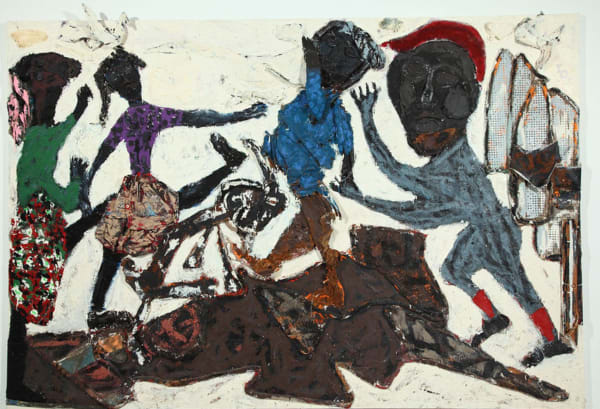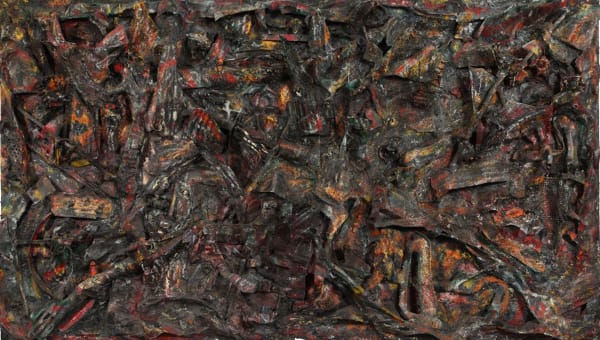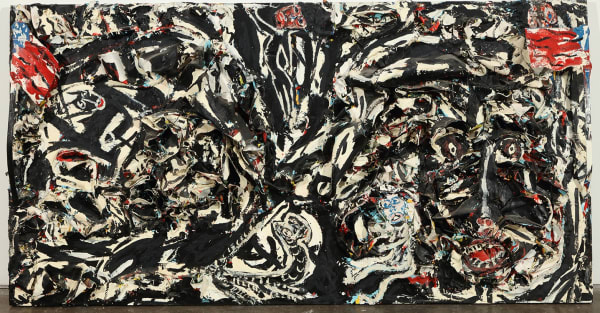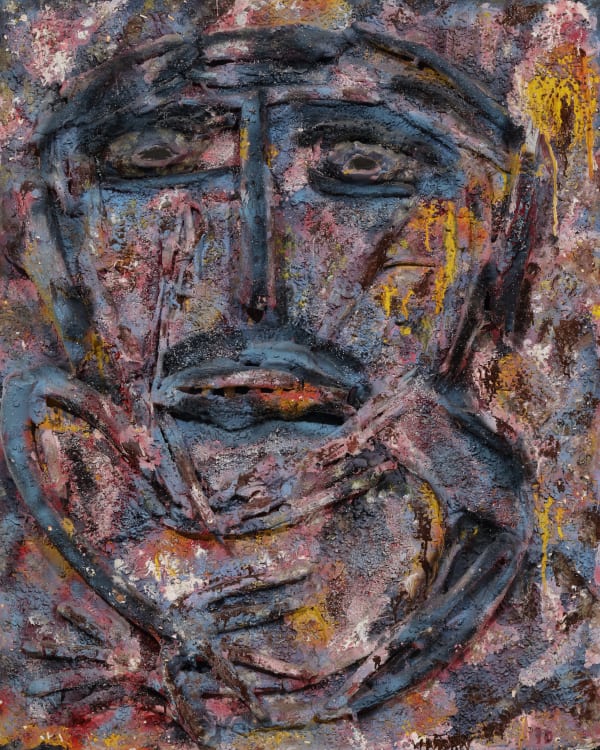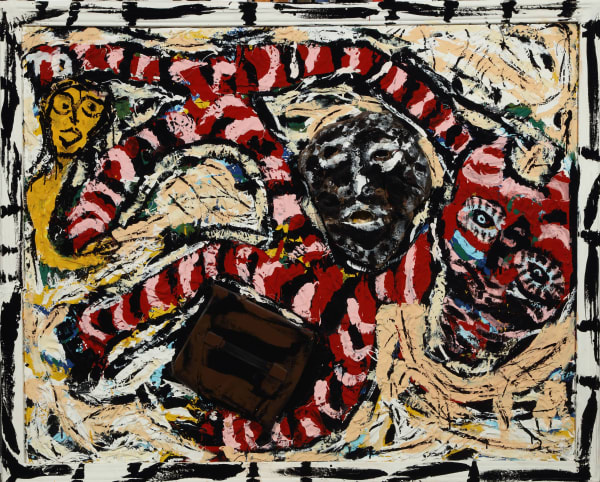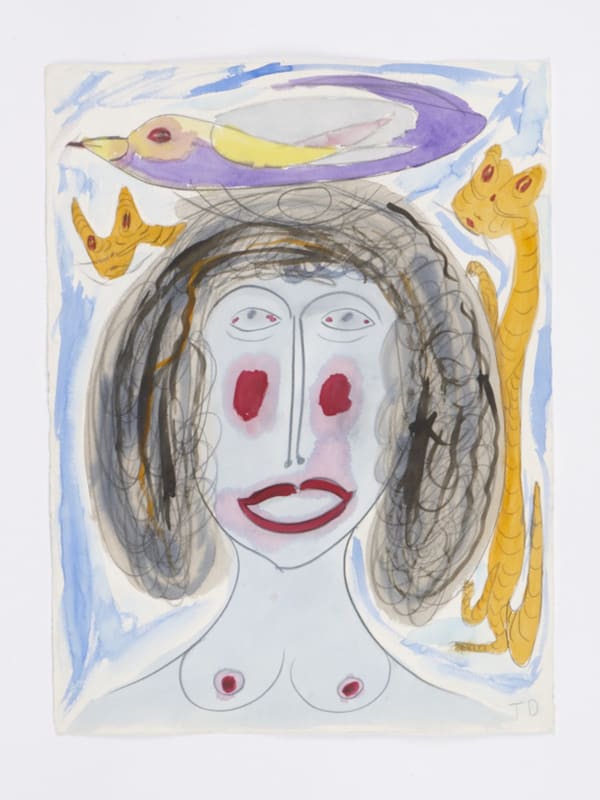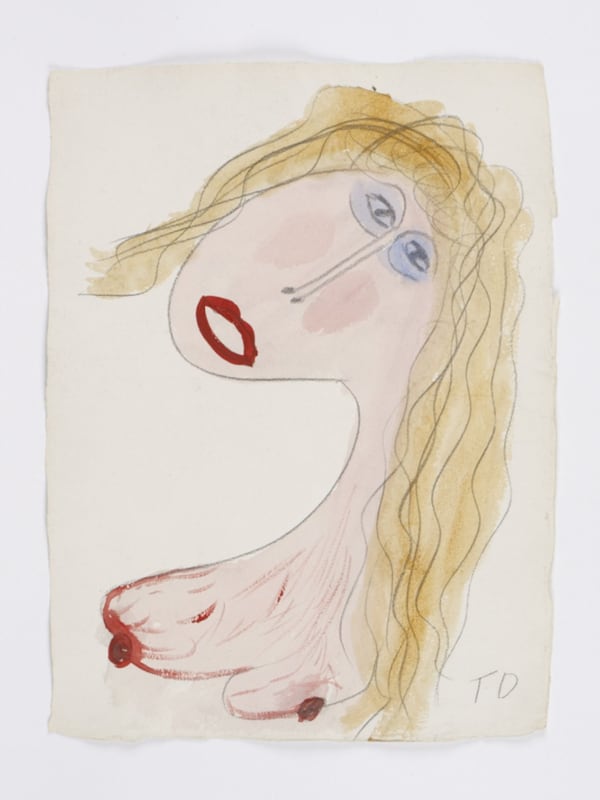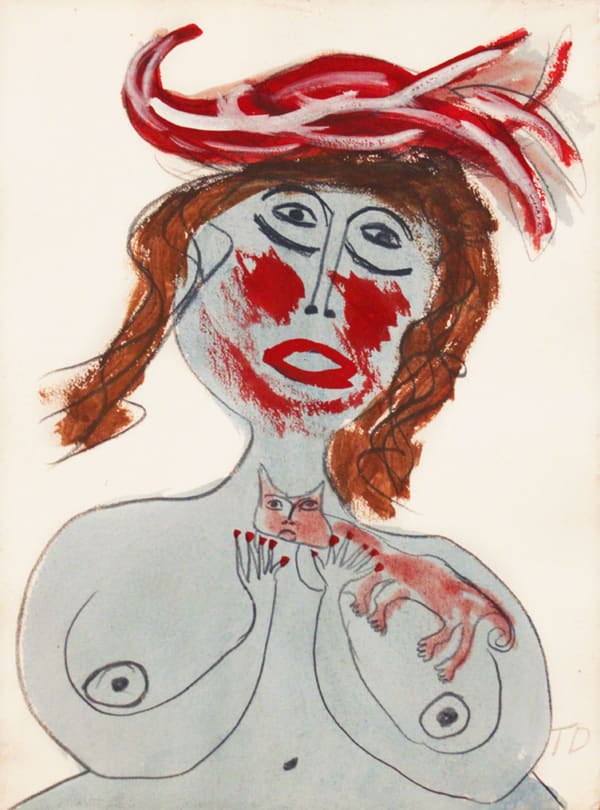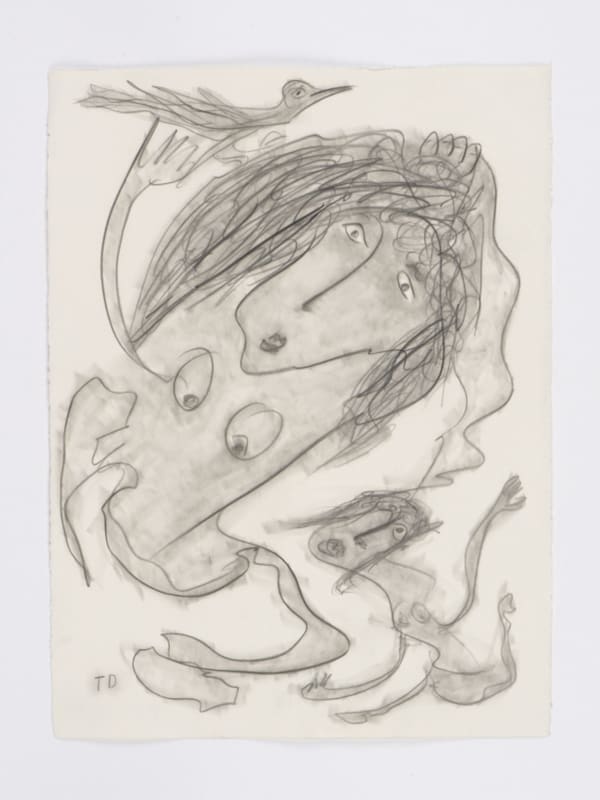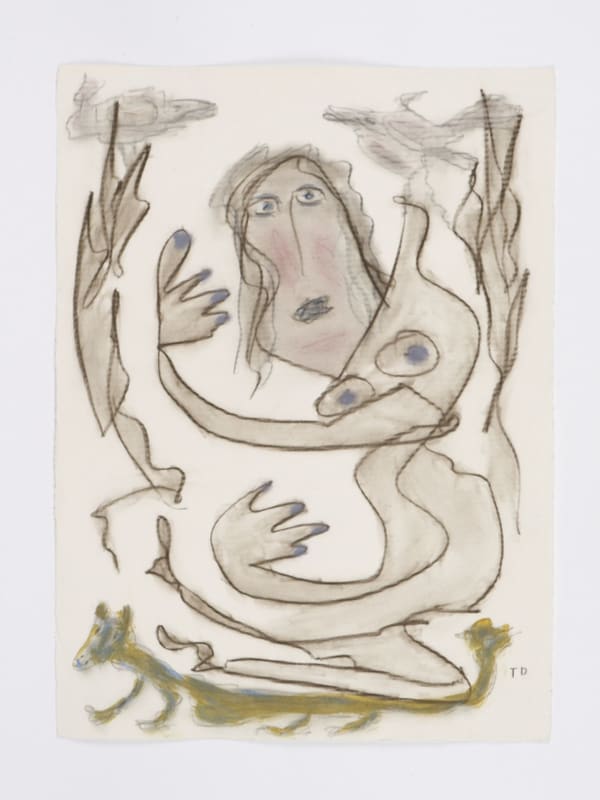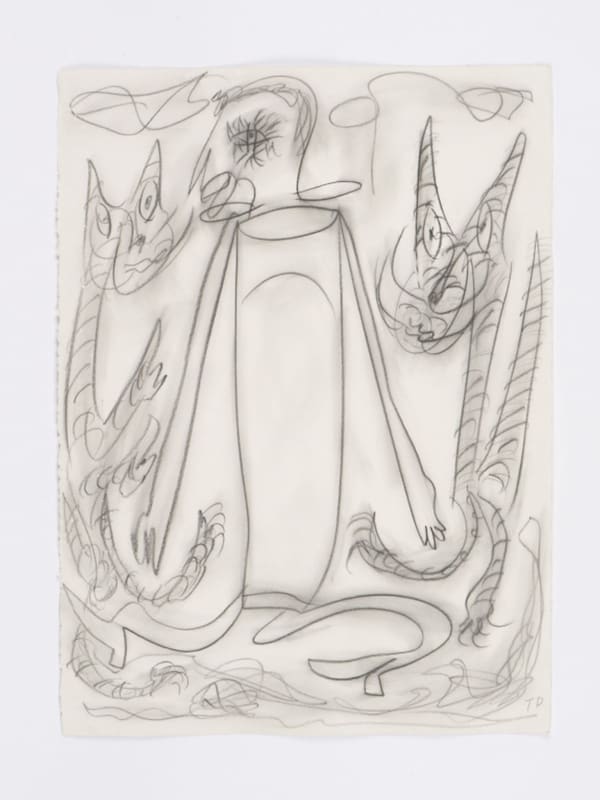Thornton Dial American, 1928-2016
Overview
"If everybody understand one another, wouldn’t nobody make art. Art is something to open your eyes. Art is for understanding."
- Thornton Dial
Thornton Dial’s artistic practice emerges from the rich soil of the Southern United States, where his lived experiences as a laborer deeply inform the raw, visceral power of his work. Dial’s creations—whether drawings, assemblages, sculptures, or installations—are born from the detritus of his environment, transforming discarded materials into poignant narratives that articulate the African-American experience with unflinching honesty. His work captures the relentless struggle and enduring spirit of a community, making visible the often-overlooked histories embedded in the Southern landscape.
Dial’s work engages in a complex dialogue between tradition and innovation, drawing on the aesthetic of yard shows and the improvisational energy of jazz to create intricate, multilayered compositions. His assemblages, with their dense amalgamation of found objects, defy simple categorization, embodying a hybrid aesthetic that bridges folk art and contemporary practices. Thematically, Dial’s art traverses the extensive terrain of African-American history, from the trauma of slavery and the Great Migration to the triumphs of the civil rights movement and beyond. Central to his oeuvre is the depiction of women, who are portrayed as pillars of strength and resilience, reflecting both Dial’s personal connections and the broader cultural significance of female figures in African-American communities. Through his work, Dial presents art as both a historical document and a guiding light, illuminating the path towards a more inclusive and understanding future.
Dial’s work engages in a complex dialogue between tradition and innovation, drawing on the aesthetic of yard shows and the improvisational energy of jazz to create intricate, multilayered compositions. His assemblages, with their dense amalgamation of found objects, defy simple categorization, embodying a hybrid aesthetic that bridges folk art and contemporary practices. Thematically, Dial’s art traverses the extensive terrain of African-American history, from the trauma of slavery and the Great Migration to the triumphs of the civil rights movement and beyond. Central to his oeuvre is the depiction of women, who are portrayed as pillars of strength and resilience, reflecting both Dial’s personal connections and the broader cultural significance of female figures in African-American communities. Through his work, Dial presents art as both a historical document and a guiding light, illuminating the path towards a more inclusive and understanding future.
Works
Biography
Thornton Dial’s (b. 1928, Emelle, AL; d. 2016, McCalla, AL) work has been the subject of numerous solo exhibitions at museums and institutions across the nation, including the Abroms-Engel Institute for the Visual Arts, University of Alabama, Birmingham, AL; traveling to Samford University Art Gallery, Birmingham, AL and Wiregrass Museum of Art, Dothan, AL (2022–23); Toledo Museum of Art, Toledo, OH (2020); High Museum of Art, Atlanta, GA (2016); Indianapolis Museum of Art, Indianapolis, IN (2011); New Orleans Museum of Art, New Orleans, LA (2011); Museum of Fine Arts, Houston, TX (2005); New Museum of Contemporary Art, New York, NY (1993); American Folk Art Museum, New York, NY (1993); and was included in the Whitney Biennial, Whitney Museum, New York, NY (2000). Dial’s work is represented in the permanent collections of the American Folk Art Museum, New York, NY; Brooklyn Museum, Brooklyn, NY; Dallas Museum of Art, Dallas, TX; de Young Museum, San Francisco, CA; Hirshhorn Museum and Sculpture Garden, Washington, D.C.; Metropolitan Museum of Art, New York, NY; Museum of Contemporary Art, Los Angeles, CA; Museum of Fine Arts, Boston, MA; Museum of Modern Art, New York, NY; National Gallery of Art, Washington, D.C.; Pérez Art Museum, Miami, FL; Smithsonian National Museum of African American History & Culture, Washington D.C.; Whitney Museum of American Art, New York, NY, among many more.
Exhibitions
-

Sleeping Giants
Herbert Creecy, Thornton Dial, Sam Glankoff 18 May - 1 Jul 2023Thanks to new ways of thinking about art history, especially due to the influence of postmodernist critical ideas, in recent decades, the overlooked or little-known legacies of some of modern art’s most remarkable sleeping giants have been rediscovered and are being appreciated anew. Now honored — and aroused — these artists’ creative spirits and the ideas that inspired them gave rise to distinctive bodies of work for which a new generation of art historians, curators, critics, and collectors have been making room in modern art’s familiar canon and in the broader story of its long, multifaceted evolution.Read more
-

The Alchemists
Co-Curated by Seph Rodney & Donovan Johnson 3 Mar - 29 Apr 2023“This is the only real concern of the artist: to recreate out of the disorder of life that order which is art.” — James Baldwin How is blackness — as...Read more
News
-

Ruckus | Review: "The Alchemists" at Johnson Lowe Gallery
By Danelle Bernsten May 4, 2023Co-curated by Donovan Johnson and Seph Rodney, the Johnson Lowe Gallery’s magnetic group exhibition of twenty-nine Atlanta-based, American, and/or international Black artists such as Renee...Read more -

Burnaway | The Alchemists at Johnson Lowe Gallery
by Folasade Ologundudu May 4, 2023Curated by Donovan Johnson and Seph Rodney at the new Johnson Lowe Gallery in Atlanta, The Alchemists brings together an amalgamation of works that unearths...Read more -

Frieze | 'The Alchemists' Ritualizes Black Culture
by Lisa Yin Zhang April 4, 2023Before we set foot in the gallery, Mark Bradford’s large-scale canvas, Playing Castles (2022), greets us through a window. It reads as a tortured aerial...Read more -

ArtsATL | Review: “The Alchemists” at Johnson Lowe is a groundbreaking, must-see show
By Jerry Cullum March 27, 2023The Alchemists, on display through April 29, represents a spectacular new beginning for the renamed and reconceived Johnson Lowe Gallery. At the same time, it...Read more -

Atlanta Journal Constitution | "Art As Transformation is at the heart of an impressive group show"
By Felicia Feaster March 14, 2023‘The Alchemists’ at Johnson Lowe Gallery brings together Atlanta-based artists those outside the city in challenging, rewarding exhibition | Atlanta Journal Constitution | Felicia FeasterRead more
Enquire

